1. Overview
Michele Alboreto was an Italian racing driver known for his distinguished career in Formula One from 1981 to 1994 and his significant achievements in endurance racing. Born in Milan, Italy, he was the Formula One World Drivers' Championship runner-up in 1985 with Scuderia Ferrari, securing five Grand Prix victories during his 14 seasons in the sport. He competed in 194 Formula One starts, earning 23 podium finishes, 2 pole positions, 5 fastest laps, and a total of 186.5 points. Beyond Formula One, Alboreto triumphed at the prestigious 24 Hours of Le Mans in 1997 with Joest Racing, and the 12 Hours of Sebring in 2001 with Audi. His career, marked by dedication and integrity, spanned various racing disciplines until his tragic death in 2001 during an Audi test.
2. Early Life and Career Beginnings
Michele Alboreto's journey into motorsport began in his formative years, showing early promise that propelled him through junior categories and into international racing.
2.1. Childhood and Early Racing
Michele Alboreto was born on December 23, 1956, in Milan, Lombardy, Italy. His motorsport career commenced in 1976 when, at the age of 19, he debuted in the Formula Monza series. For this initial foray, he competed with a car known as the "CMR," which he and his friends had built themselves. Despite its uncompetitiveness, this early experience laid the foundation for his racing future. In 1978, seeking a more competitive platform, Alboreto transitioned to Formula Three in Italy, driving a March-Toyota and beginning to secure race victories.
2.2. Junior Formula Career
Alboreto quickly advanced through the ranks of junior motorsport. In his debut Formula Three season in 1979, he finished second in the Italian Formula Three Championship with three wins and sixth in the European Formula Three Championship. The following year, 1980, proved to be a breakthrough for him as he clinched the European Formula Three Championship crown, overcoming competitors like Thierry Boutsen, Corrado Fabi, and Philippe Streiff with four victories and three pole positions. He also secured a third-place finish in the Italian championship that year, taking five wins across the two series. This success earned him a move into Formula Two, a significant feeder series for Formula One. Joining the Minardi team in 1981 for the 1981 European Formula Two season, Alboreto scored Minardi's only F2 victory at the Misano circuit. He finished eighth in the championship despite not completing the entire season, as he was soon called up to Formula One.
2.3. Early Sportscar Activities
Parallel to his open-wheel career, Alboreto also ventured into sportscar racing. In 1980, he was selected by Lancia to join their official squad in the World Sportscar Championship, participating in rounds that did not conflict with his other racing commitments. He shared a Group 5 category Lancia Beta Montecarlo with drivers such as Walter Röhrl or Eddie Cheever, achieving three second-place finishes and a fourth in four appearances during the 1980 season.
Alboreto continued a partial schedule in sportscars during 1981, even while competing in Formula Two and Formula One. This year marked his first participation in the 24 Hours of Le Mans, where he finished eighth overall and second in class, becoming the highest-finishing Lancia. He then secured his first win in the championship at the Six Hours of Watkins Glen with co-driver Riccardo Patrese, finishing the year as the highest-ranked Lancia driver in the Drivers' Championship.
In 1982, Lancia introduced the new Lancia LC1 for endurance races. Alboreto achieved further success, taking victories at the 1000 km of Silverstone, the 1000km Nürburgring, and his home circuit, Mugello Circuit. Despite mechanical issues and accidents leading to some retirements, he finished fifth in the Drivers' Championship. For 1983, Lancia changed cars again to the new Lancia LC2. After a ninth-place finish in its debut at 1000km Monza, the car struggled with reliability. Alboreto's early departure from the team to concentrate fully on his Formula One commitments meant he scored only two points in the championship that year.
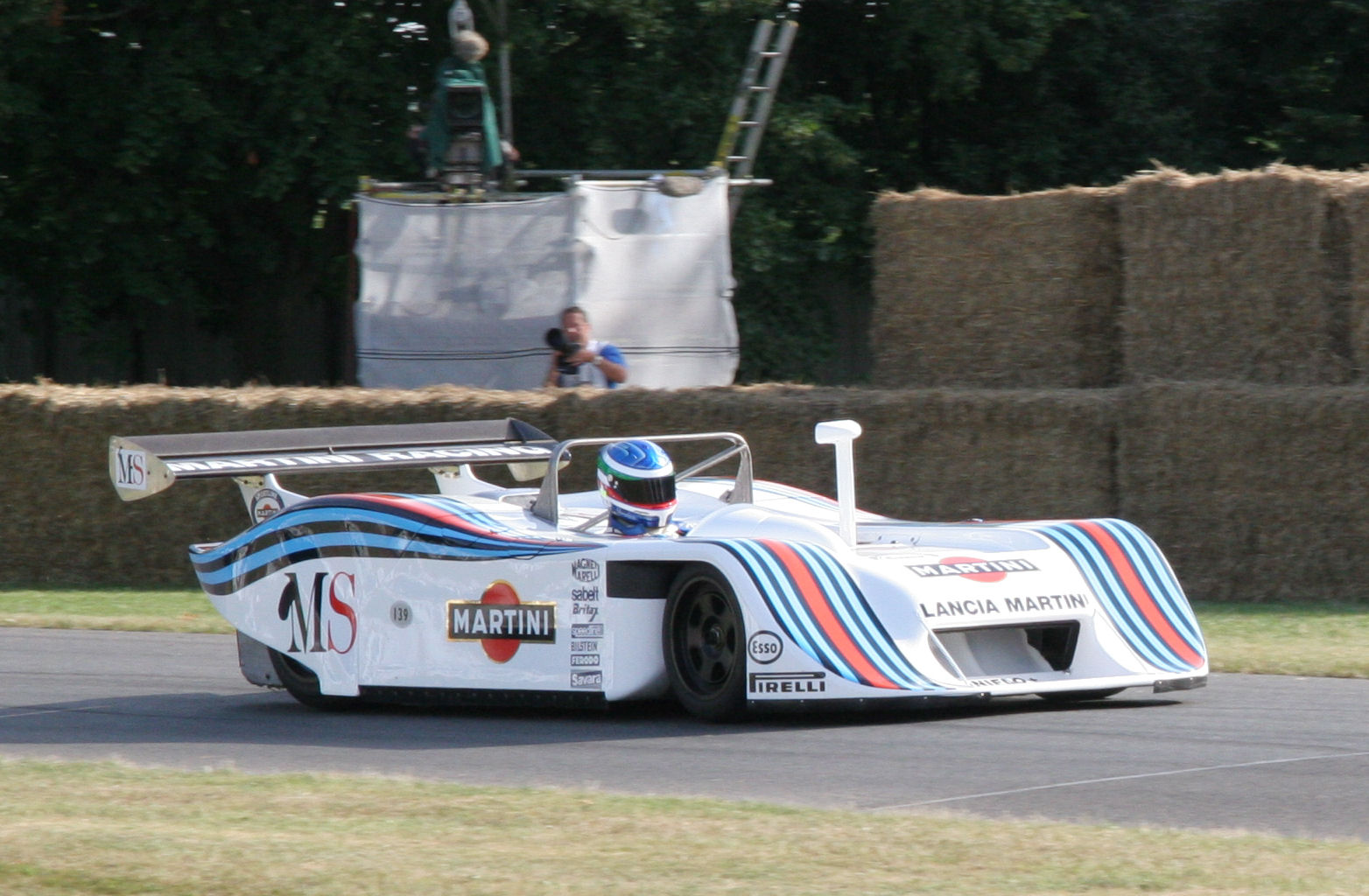
3. Formula One Career
Michele Alboreto's Formula One career spanned 14 seasons, highlighted by his tenure with Scuderia Ferrari and significant victories with Tyrrell Racing.
3.1. Tyrrell Era
Alboreto made his Formula One debut at the 1981 San Marino Grand Prix at the age of 24, joining the Cosworth-powered Tyrrell team as a replacement for Ricardo Zunino. His first race ended in a collision. He failed to score points in his debut year, with a best finish of ninth at the 1981 Dutch Grand Prix.
The 1982 Formula One season saw a more successful campaign for Alboreto. He secured his first Grand Prix podium at Imola and achieved his maiden Formula One victory at the final round, the 1982 Caesars Palace Grand Prix in Las Vegas. This win made him the last victor of the Caesars Palace Grand Prix, as the event was removed from the calendar the following year. Alboreto finished the season eighth overall, as the top Italian driver.
In the 1983 Formula One season, Alboreto secured his second F1 victory at the 1983 Detroit Grand Prix. This win was notable as the last for a naturally aspirated car until the end of the turbo era in 1989, and the 155th and final F1 victory for the Cosworth DFV engine (specifically its 1983 development, the DFY). Despite this win, consistent points finishes eluded him, and he finished twelfth in the championship. However, his strong performances led to an offer from Ferrari, and he signed to partner René Arnoux for the 1984 season, becoming the first Italian driver to race for the marque since Arturo Merzario in 1973. This move reportedly broke Enzo Ferrari's personal rule against hiring Italian drivers for his Formula One team, a testament to Alboreto's talent.
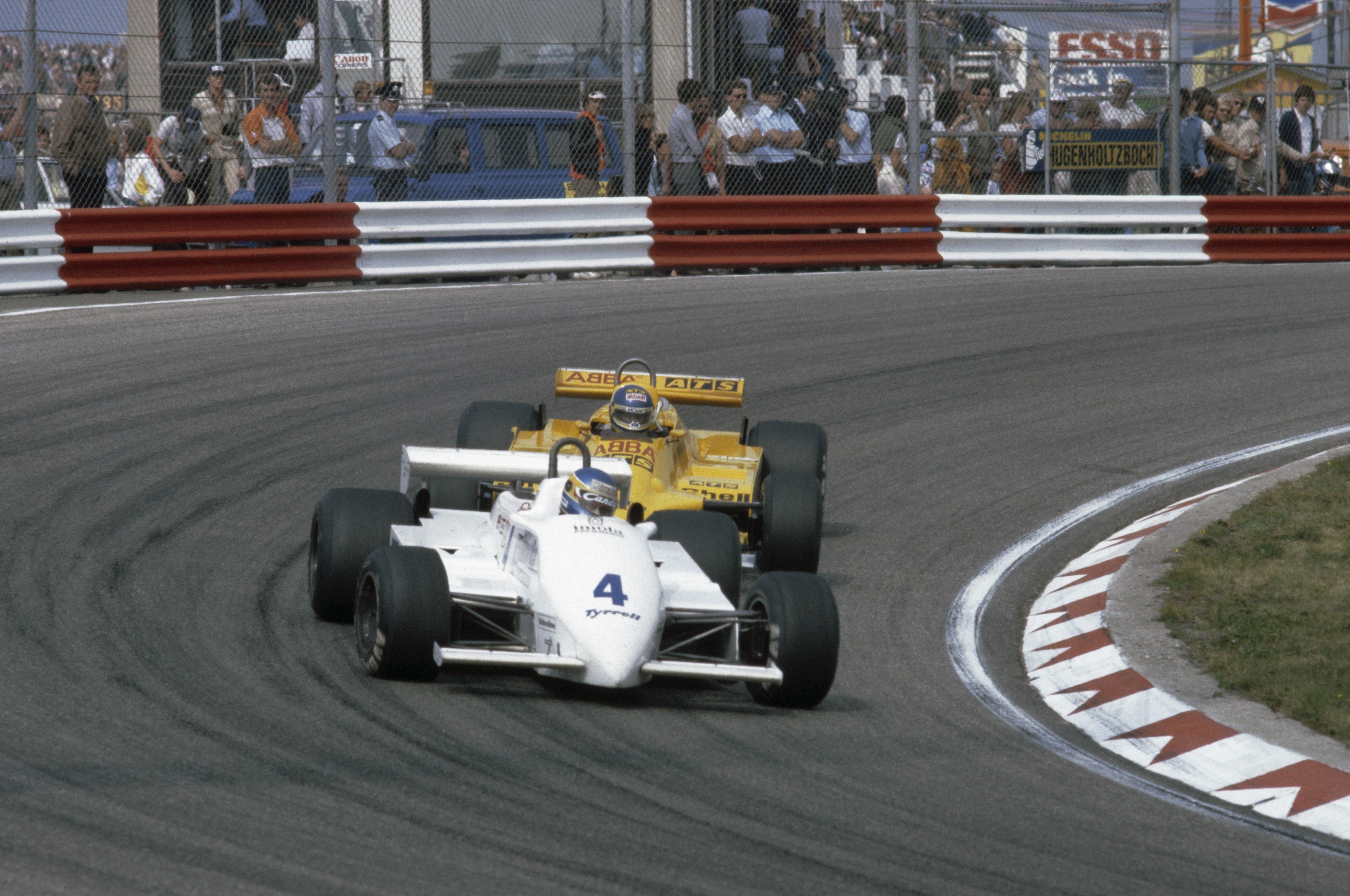
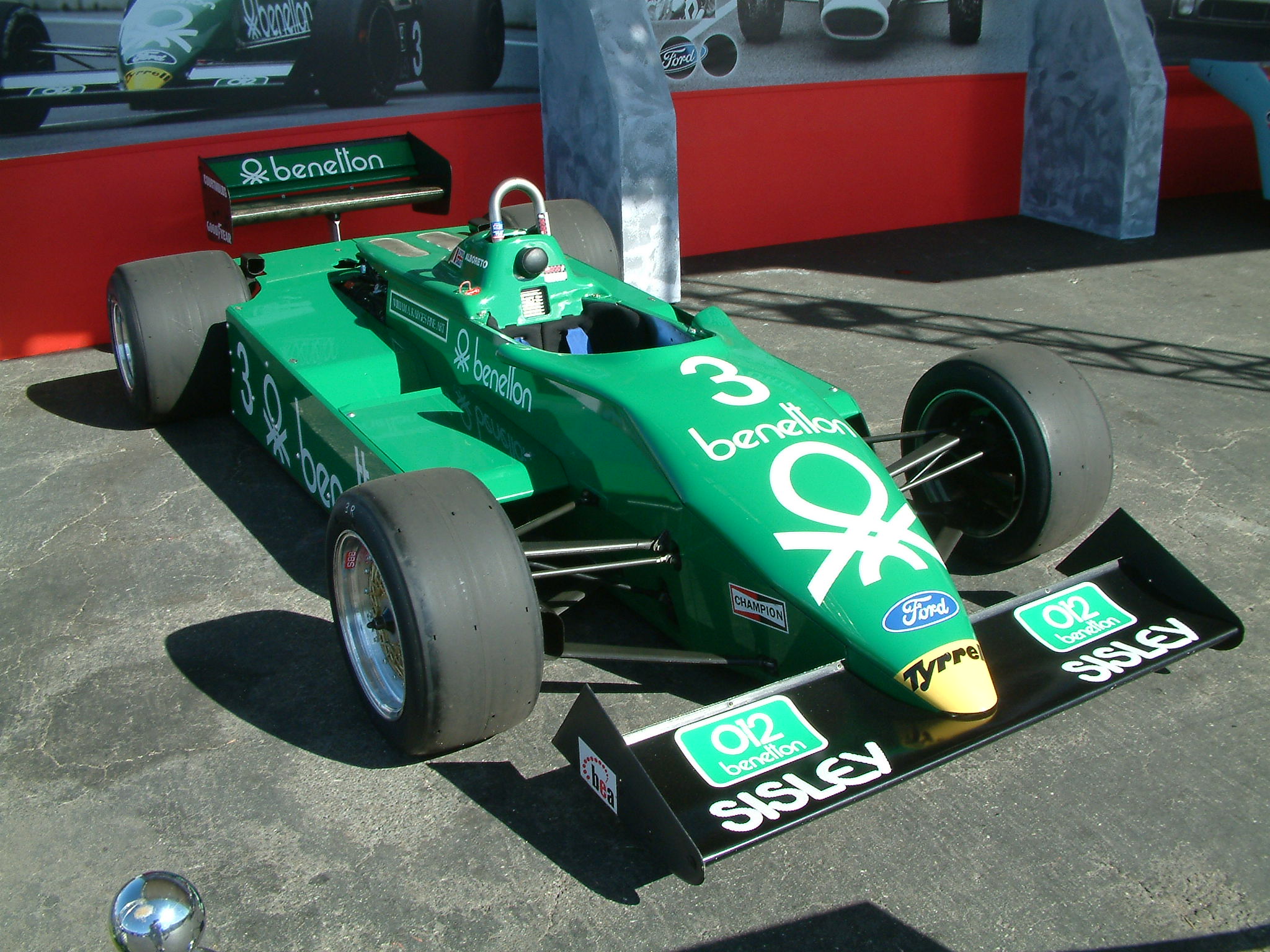
3.2. Ferrari Era
Alboreto's time with Scuderia Ferrari represented the peak of his Formula One career, marked by a strong championship challenge and a unique bond with Enzo Ferrari.
3.2.1. Peak Performance and Championship Challenge
Alboreto's debut season with Ferrari in 1984 saw him win the third round at the Zolder, making him the first Italian driver to win an F1 Grand Prix for Ferrari since Ludovico Scarfiotti in 1966. Despite eight retirements, he secured three more podium finishes, including second place at the Monza and Nürburgring, and a third at the Österreichring. He finished the year fourth in the Drivers' Championship with 30.5 points, surpassing his teammate René Arnoux and establishing himself as Ferrari's lead driver. Italian fans embraced him, with many hailing him as the return of legendary drivers like Alberto Ascari.
The 1985 Formula One season proved to be Alboreto's most successful in Formula One, as he mounted a fierce championship challenge against McLaren's Alain Prost. He secured two dominant victories: the first at the 1985 Canadian Grand Prix and the second at the 1985 German Grand Prix, where he overcame incidents and a smoking car to win. Alboreto led the points standings until Round 11 at Zandvoort. However, Ferrari's unreliability ultimately cost him the title. He failed to finish the final five races of the season due to mechanical failures, specifically issues stemming from a forced change in turbocharger suppliers from KKK to Garrett after Enzo Ferrari reportedly reacted angrily to perceived pressure from Porsche on KKK. This disruption severely impacted the engine's performance and reliability. Despite these setbacks, Alboreto finished the season as runner-up with 53 points, 20 points behind the new World Champion Prost. Formula One journalist Nigel Roebuck later commented that Alboreto was Prost's "only real challenger" that year.
The following seasons were less successful. In 1986, Ferrari's new car, the Ferrari F1/86, proved to be slow and unreliable, leading to nine retirements for Alboreto, seven of which were mechanical failures. He managed only one podium finish, a second place at the 1986 Austrian Grand Prix, and ended the season ninth overall with 14 points, behind his teammate Stefan Johansson, despite Ferrari's V6 turbo engine being powerful.
In 1987, Gerhard Berger joined Ferrari, marking the end of Alboreto's status as the team leader. Berger's two late-season wins in Japan and Australia cemented his position as the number one driver. Alboreto managed three podiums, finishing seventh overall with 17 points, 19 points behind Berger. The 1988 Formula One season was Alboreto's final year with Ferrari. With McLaren-Honda dominating, Ferrari managed only one win at the Italian Grand Prix, where Berger won with Alboreto finishing second. Ferrari declined to offer Alboreto a new contract, leading him to seek opportunities elsewhere. He finished the season fifth in the Drivers' Championship with 24 points. Alboreto's 80 Grand Prix starts for Ferrari set a new team record, which was later surpassed by Berger in 1995.
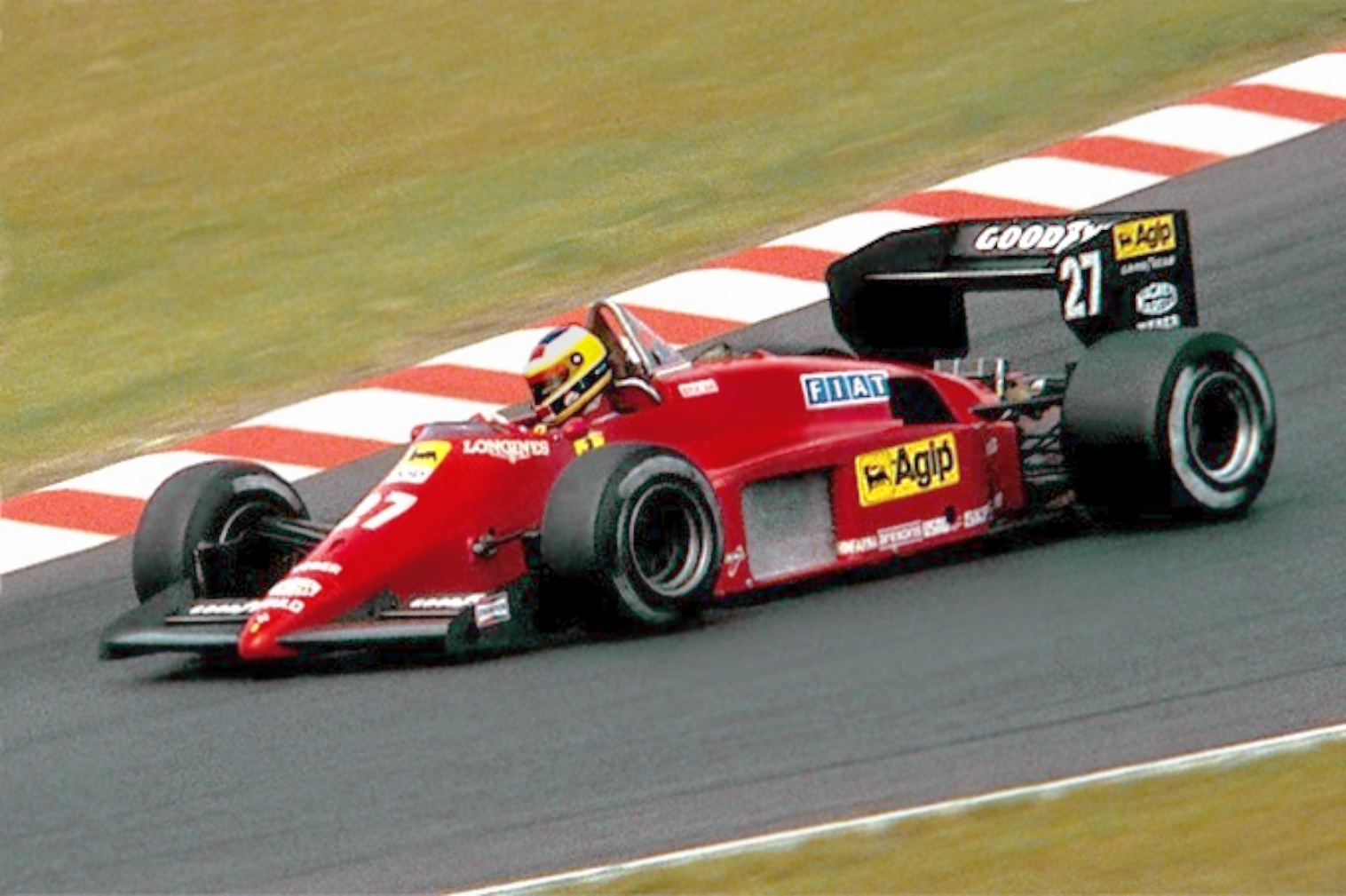
3.2.2. Relationship with Enzo Ferrari
Michele Alboreto enjoyed a unique and cherished relationship with Enzo Ferrari, who deeply respected him. Enzo Ferrari, known for his reluctance to hire Italian drivers for his Formula One team due to the intense pressure from Italian fans and media, made an exception for Alboreto. He was the first Italian to drive for Ferrari in Formula One since Arturo Merzario in 1973, a decision influenced by Alboreto's victory at the 1982 Caesars Palace Grand Prix.
Their bond was characterized by mutual respect and a candid exchange of ideas. Alboreto, unlike most drivers, felt comfortable critiquing the car's issues directly to Enzo, a privilege shared only with legendary figures like Niki Lauda. This open communication allowed Alboreto to demand improvements to the car, and Enzo, in turn, placed significant trust in his driver. Enzo's fondness for Alboreto was evident in gestures such as gifting him a custom four-seater Ferrari road car, recognizing Alboreto's family life.
The depth of their connection became particularly apparent after Enzo Ferrari's death in August 1988. With Enzo's passing, Alboreto lost his primary advocate within the team. The team dynamics shifted, and a growing conflict with designer John Barnard over the 639 chassis concept and semi-automatic transmission further strained Alboreto's position. Despite finishing second to Berger at the 1988 Italian Grand Prix, which was held shortly after Enzo's death and contributed to a Ferrari 1-2 finish at Monza, Alboreto's contract was not renewed. He later reflected that he was not overly saddened by his departure, stating that he was "Ferrari's driver because of Enzo Ferrari," and without him, there was no reason to remain. He considered driving for Ferrari the greatest experience of his life and wished the team future championship success.
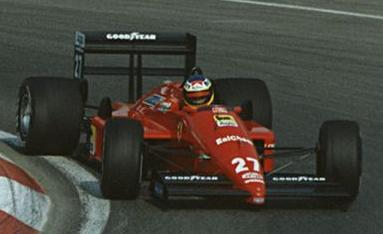
3.3. Later F1 Teams
Following his departure from Ferrari, Michele Alboreto continued his Formula One career with several teams, navigating periods of fluctuating competitiveness and challenging circumstances.
In 1989, facing limited options, Alboreto returned to his former team, Tyrrell, a move he accepted despite contemplating retirement. The relationship with team boss Ken Tyrrell soon soured. At the 1989 Monaco Grand Prix, Alboreto was asked to drive the older 1988-spec Tyrrell 017 car while his teammate Jonathan Palmer used the newer Tyrrell 018. Alboreto refused to accept this, boycotting the Thursday practice session. Despite the dispute, he finished fifth in the race. This was followed by a strong third-place podium finish at the next race in Mexico, the only podium for Tyrrell that season. However, when Tyrrell secured a new sponsorship deal with Camel cigarettes, Alboreto was asked to terminate his personal sponsorship with Marlboro, a rival brand. Alboreto, feeling disappointed after Marlboro's long-standing support had helped fund his wages, refused. Consequently, Tyrrell replaced him with Formula 3000 driver Jean Alesi after the 1989 Canadian Grand Prix.
Ironically, Alboreto soon lost his Marlboro sponsorship as they would not find him another drive for the rest of 1989. However, he was quickly hired by the French Larrousse team, which was incidentally co-sponsored by Camel, for the remainder of the season starting from the 1989 German Grand Prix. Although his new teammate Philippe Alliot demonstrated the Lola LC89's potential with its 600 horsepower (447 kW) Lamborghini V12 engine, Alboreto failed to score any points. He even failed to pre-qualify twice (in Spain and Australia) and failed to qualify once (in Japan). During qualifying for the 1989 Hungarian Grand Prix, he broke two ribs after cutting a chicane. He finished the year eleventh in the Drivers' Championship with six points, secured entirely during his time with Tyrrell.
For 1990, Alboreto moved to the Arrows team, which was being acquired by its sponsor, Footwork. This was a "transition year" for him, with the chassis in its second season and using the less competitive Ford Cosworth DFR V8 engine. He finished in the top ten several times but scored no points, becoming one of 21 drivers to do so that season.
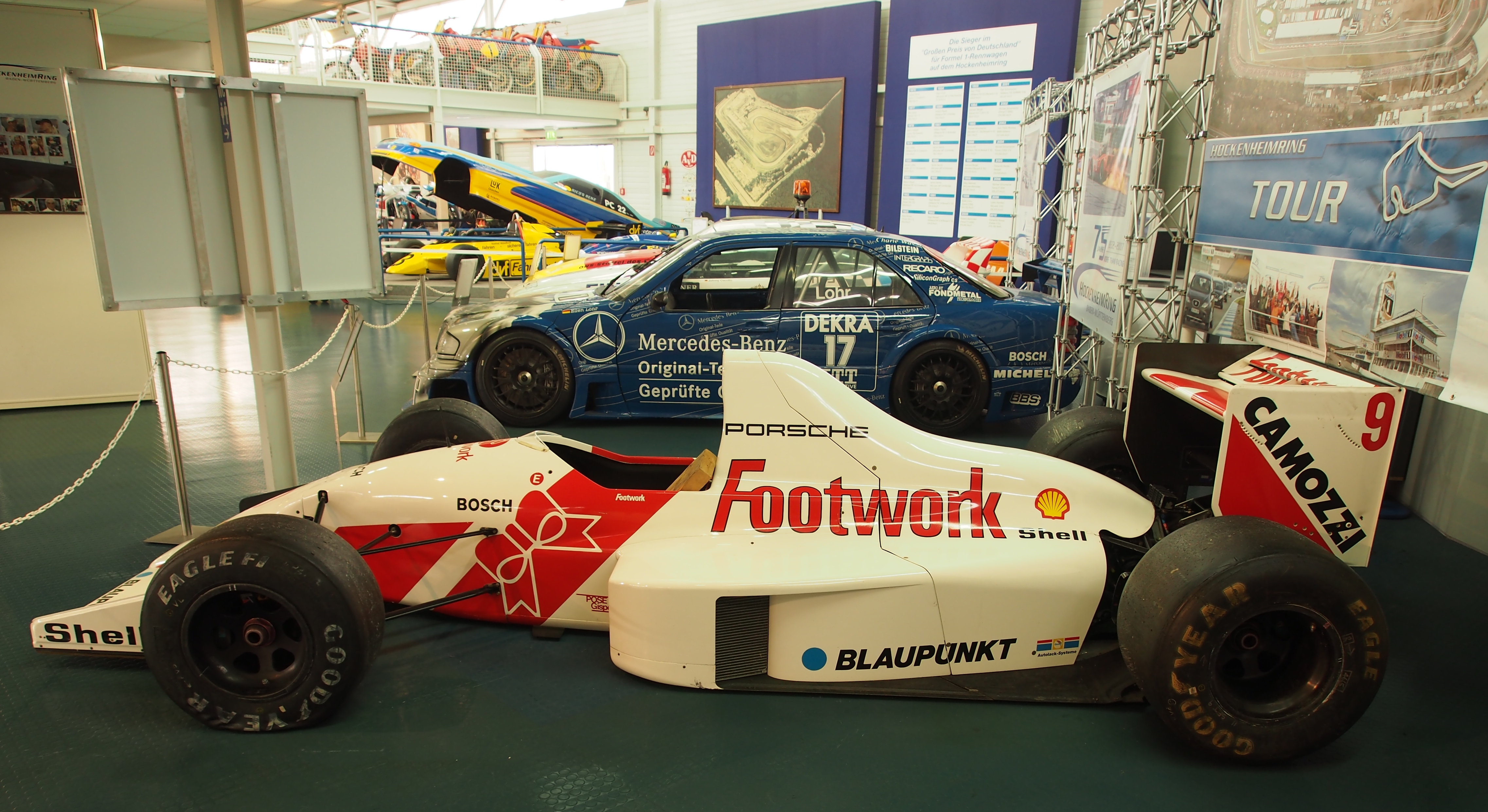
In 1991, Footwork secured Porsche V12 works engines, but the package failed to meet expectations. The engines were heavy, unreliable, and lacked power, often preventing Alboreto from qualifying. The team eventually replaced them with Hart-supplied Cosworth V8 engines for the rest of the season, but this short-term fix did not improve competitiveness, leading to Alboreto's second consecutive season without points. This period saw him experience the humiliation of failing to pre-qualify twice and failing to qualify five times. He became the only F1 Grand Prix winner to also fail to pre-qualify.
The 1992 Formula One season brought renewed hope as Footwork received Mugen-Honda V10 engines. The new Footwork FA13 chassis proved more reliable, and Alboreto scored points four times, including three consecutive point finishes in Brazil (6th), Spain (5th), and San Marino (5th). He also finished seventh six times, just outside the points-scoring positions (which were limited to the top six at the time). With a total of six points, the 35-year-old finished tenth overall, completing the most laps of any F1 driver that year. He later considered this his last competitive season.
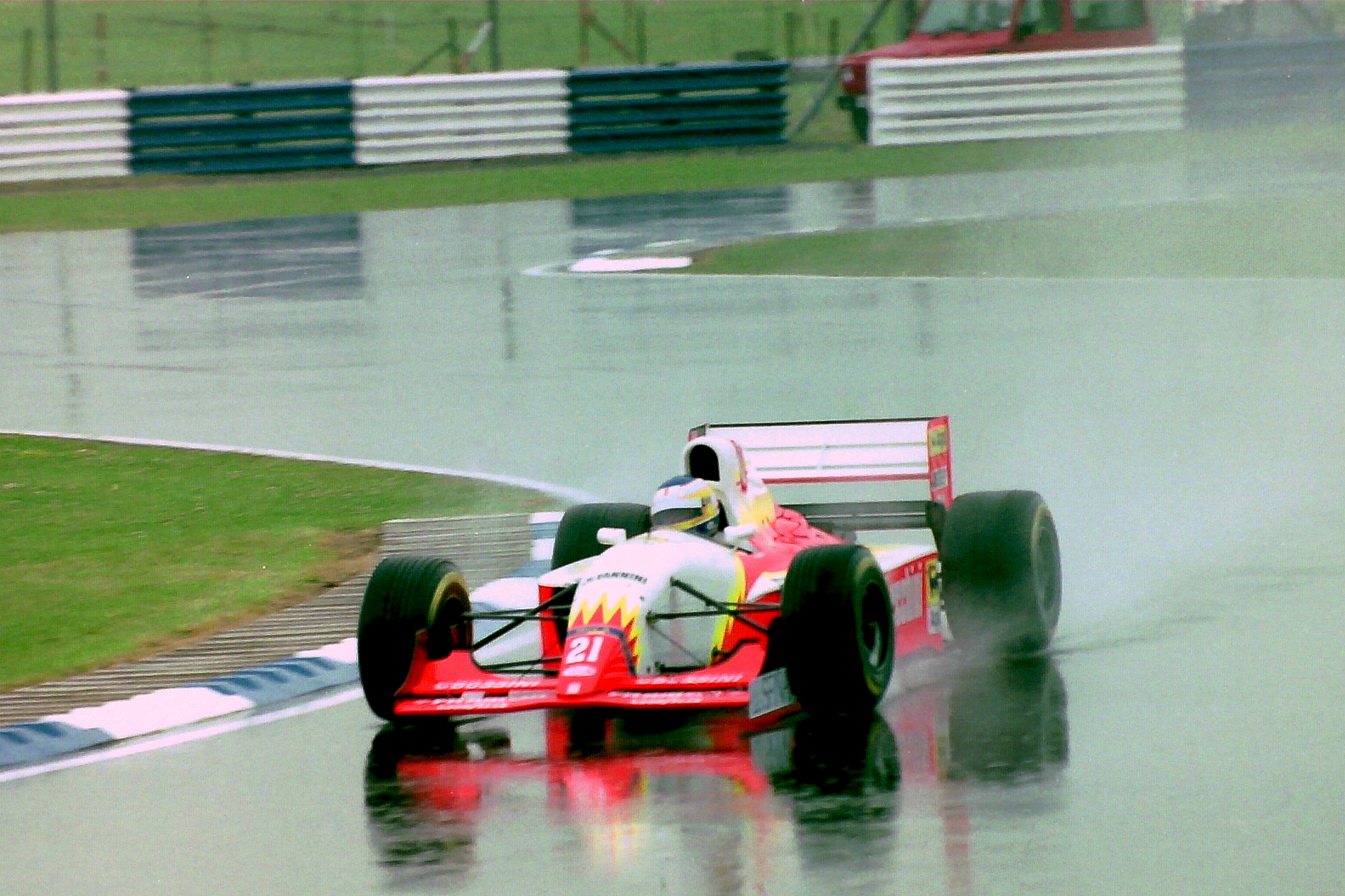
For 1993, Alboreto moved to the Italian team Scuderia Italia. The team switched from their Dallara chassis to a new Lola T93/30, which proved to be very uncompetitive due to its excessively long wheelbase. Coupled with an uncompetitive Ferrari V12 customer engine, Alboreto failed to score any points and frequently failed to qualify, often being the slowest car in the 26-car field. Scuderia Italia withdrew from F1 before the end of the season and merged with fellow Italian team Minardi for 1994. The 1994 Formula One season was Alboreto's last in Grand Prix racing, driving for the merged Minardi team. The Minardi cars, the Minardi M193B and later the Minardi M194, were generally uncompetitive and unreliable. Alboreto scored his only point of the season with a sixth-place finish at the 1994 Monaco Grand Prix, a survival race.
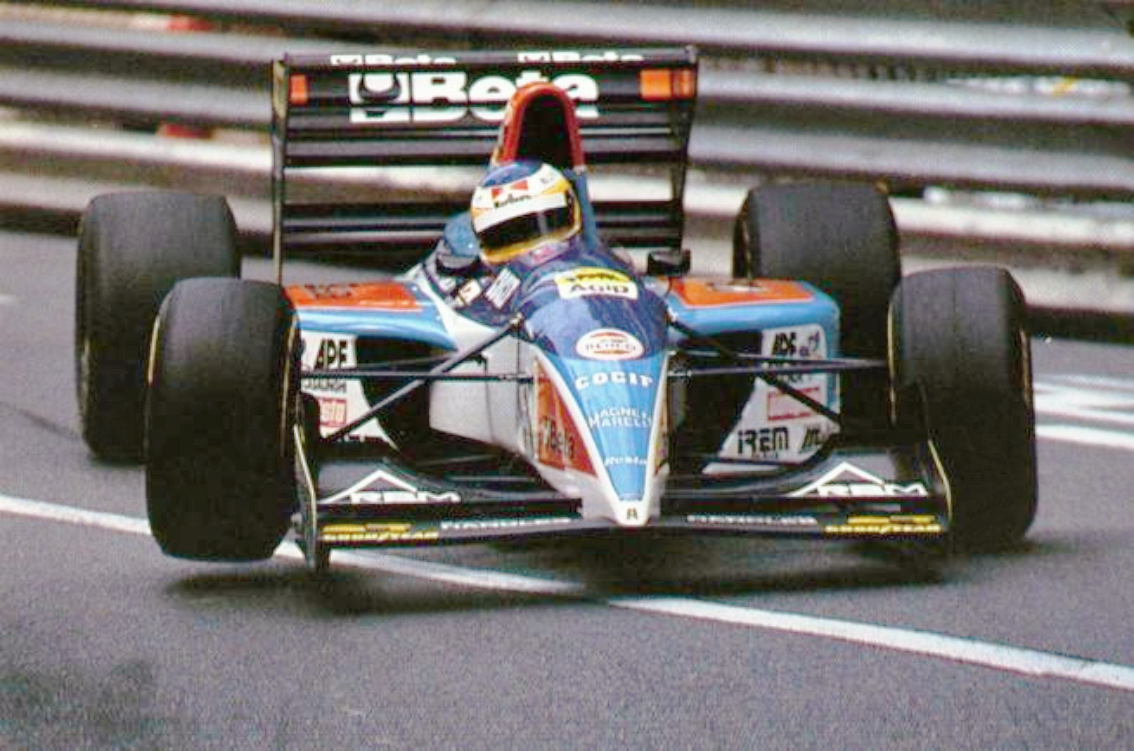
At the 1994 San Marino Grand Prix, a dark weekend overshadowed by the deaths of Ayrton Senna and Roland Ratzenberger, Alboreto's right rear wheel detached from his car after a pit stop, bouncing into the pit lane and injuring several mechanics from other teams. This incident prompted the expedited implementation of pit lane speed limits in Formula One for safety. He retired from Grand Prix racing at the end of the season, having made 194 starts and secured five Grand Prix wins. He expressed his strong bond with Minardi, stating that he always wanted to end his F1 career with the team, as its founder Giancarlo Minardi had been instrumental in introducing him to Ferrari early in his career.
4. Post-Formula One Career
After retiring from Formula One, Michele Alboreto diversified his racing activities, competing in touring cars, IndyCar, and achieving significant success in endurance racing.
4.1. Touring Car and IndyCar
In 1995, following his F1 departure, Alboreto moved to the Deutsche Tourenwagen Meisterschaft (DTM), the German Touring Car Championship. He raced for Alfa Romeo's factory team, Alfa Corse, finishing 22nd in the championship with four points. He also made appearances in the International Touring Car Championship (ITCC) and the World Sportscar Championship, the latter with Ferrari, though these ventures did not yield significant results.
Alboreto returned to open-wheel racing in 1996, joining the newly formed Indy Racing League (IRL) with Team Scandia. The then 39-year-old competed in all three rounds, securing a fourth-place finish on his debut at Walt Disney World Speedway and an eighth at the Phoenix International Raceway. His sole entry in the 1996 Indianapolis 500 ended in retirement due to gearbox problems. During his time in the United States, Alboreto also raced sports prototypes for Scandia/Simon, competing in the IMSA World Sports Car Championship with a Ferrari 333 SP. In 1997, he achieved his first and only IRL podium, finishing third at the "True Value 200" held at New Hampshire Motor Speedway. A further fifth place at Las Vegas Motor Speedway contributed to his 62 points, placing him 32nd overall in the drivers' championship.
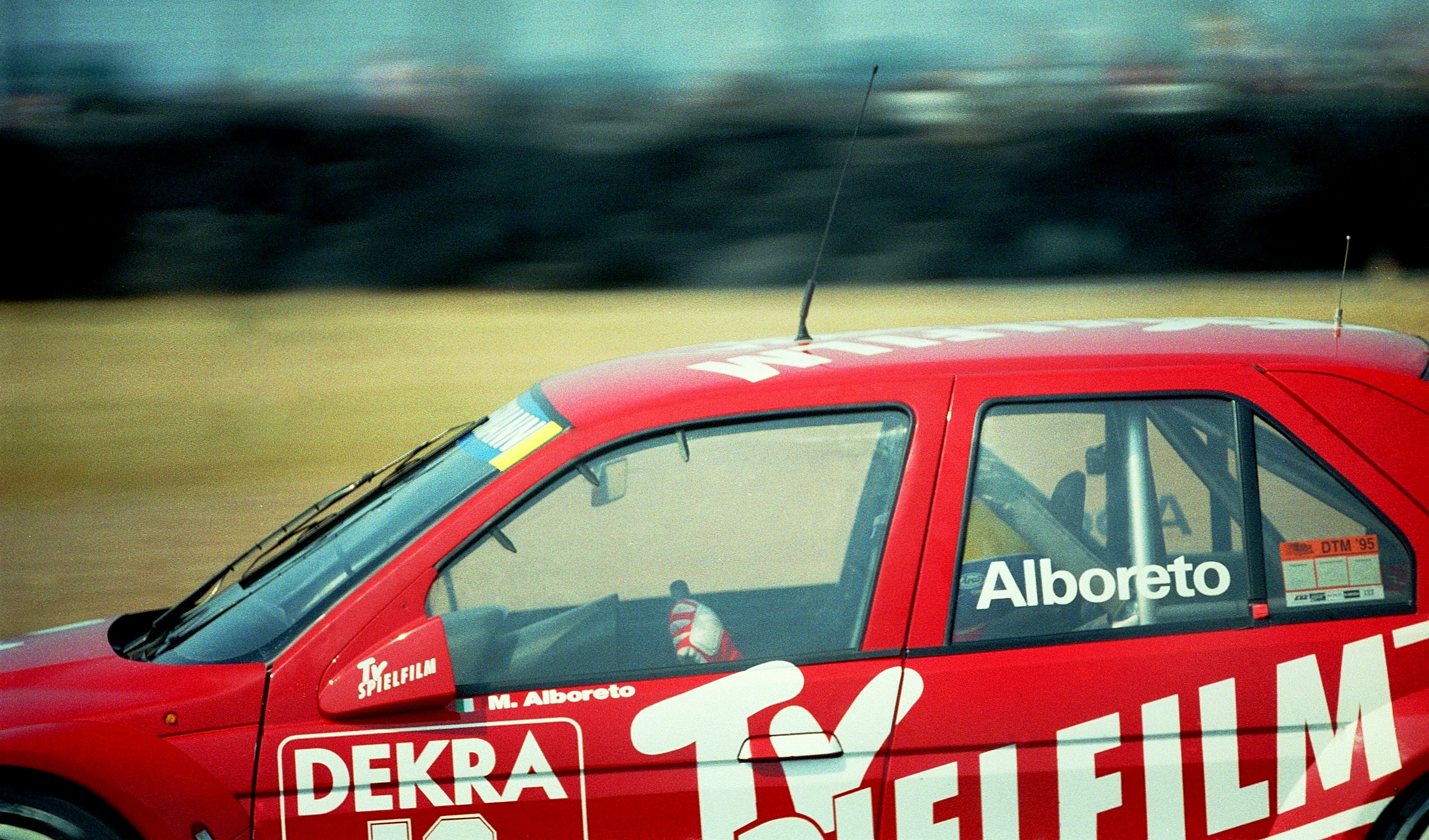
4.2. Endurance Racing Achievements
Alboreto found considerable success in endurance racing during his post-Formula One career, highlighted by major victories. In 1996, he entered the 24 Hours of Le Mans with a Joest Racing-entered Porsche WSC-95 alongside Pierluigi Martini and Didier Theys, but the car retired due to an engine failure.
The following year, 1997, proved triumphant. Alboreto won the 1997 24 Hours of Le Mans with the same Porsche WSC-95 car, sharing the drive with former F1 teammate Stefan Johansson and future Le Mans legend Tom Kristensen. The trio completed 361 laps, one more than the second-placed car. This victory marked the pinnacle of his sportscar achievements.
He continued to compete at Le Mans in subsequent years, though without repeating his victory. In 1998, he retired with Porsche. However, he achieved strong results with newcomer Audi, securing a fourth place at the 1999 24 Hours of Le Mans and a third at the 2000 24 Hours of Le Mans. He also won the 2000 Petit Le Mans race. His final major victory came at the 2001 12 Hours of Sebring with Audi, just a month before his death.
5. Personal Life and Characteristics
Michele Alboreto was widely admired not only for his racing skill but also for his personal qualities, earning him respect and affection throughout his career.
5.1. Personality and Values
Alboreto was renowned for his integrity, loyalty, and gentlemanly conduct, both on and off the track. He demonstrated a deep passion for racing, often stating that his hobby was "racing in F1," and remained committed to the sport even when facing challenging team situations. He was married to Nadia Astorri in 1982 and had two children.
His loyalty extended to various relationships. He maintained a strong bond with Giancarlo Minardi, who had introduced him to Ferrari and with whom he chose to end his F1 career. Even in financially difficult times, he held onto his personal ties, for instance, continuing to patronize a small, run-down hotel near Monza where he had been supported during his junior formula days.
Alboreto's relationships with team principals were also notable. While at Ferrari, he was one of the few drivers, alongside Niki Lauda, who could openly and critically discuss technical issues with Enzo Ferrari without fear of reprisal, a testament to Enzo's high regard for him. This mutual respect and trust allowed for a constructive, albeit sometimes tense, relationship.
He showed professionalism and grace even in disappointment. When Frank Williams unilaterally broke a verbal agreement for a 1989 drive, leaving Alboreto in a difficult position, he expressed surprise but avoided public bitterness. Similarly, when Ken Tyrrell asked him to sever his personal sponsorship with Marlboro to accommodate a new team sponsor (Camel), Alboreto, despite feeling disappointed by Tyrrell's handling of the situation, chose to quietly step aside from the team rather than causing a fuss, displaying remarkable personal integrity.
His friendly and fair demeanor was evident even with direct competitors. In a 1993 test with Benetton, where he was vying for a seat against the younger JJ Lehto, Alboreto engaged in discussions with Lehto about the car and expressed a friendly attitude, stating that both drivers were fast enough and the decision was up to the team.
5.2. Helmet Design and Symbolism
Alboreto's distinctive helmet design featured a blue base with a thick yellow stripe bordered by white, running across the center of the helmet. This specific design and color combination served as a direct tribute to Swedish Formula One driver Ronnie Peterson, whose helmet also used blue and yellow to represent the Swedish flag.
Alboreto and Peterson first met in 1972 and developed a close friendship that lasted until Peterson's tragic death at the 1978 Italian Grand Prix. Alboreto was present at Monza on the day of Peterson's fatal crash and was deeply affected, reportedly weeping openly. His helmet design was a lasting homage to his respected friend. In 1986, Alboreto even used a helmet with a visor peak, a specific trademark feature of Peterson's helmet, further emphasizing his tribute.
5.3. Public Image and Nicknames
Michele Alboreto enjoyed immense popularity among Italian fans, particularly the passionate Ferrari supporters known as Tifosi. For Italian fans, the ultimate desire was to see an Italian driver win for Ferrari, and Alboreto became a beloved figure who embodied this aspiration. His dedication and sometimes unfortunate circumstances fostered deep sympathy and admiration, leading to affectionate chants of "Forza Michele!" (Go Michele!) at Formula One Grands Prix held in Italy.
His stellar performance in 1984, especially with Ferrari, led to him being hailed as the "return of Alberto Ascari", another legendary Italian driver. As both Alboreto and Ascari hailed from Milan, Alboreto affectionately earned the nickname "Flying Milan" (or "Flying Milanese"), associating him with Ascari's famed moniker. This nickname also subtly hinted at his driving style; like Ascari, Alboreto was often seen as a driver who excelled when leading from the front or starting from pole position, typically converting such positions into victories by maintaining his lead.
6. Death
Michele Alboreto's life was tragically cut short in a testing accident in 2001, a somber event that prompted significant safety advancements in motorsport.
6.1. Circumstances of Death
On April 25, 2001, Michele Alboreto, along with a small team of Audi engineers, was conducting a series of tests on an Audi R8 race car at the Lausitzring (also known as EuroSpeedway Lausitz) near Dresden, eastern Germany. These tests were crucial preparations for Audi's participation in the upcoming 24 Hours of Le Mans in June.
The testing took place primarily on the facility's public racing sections, utilizing the tri-oval for high-speed laps and the Grand Prix circuit for slower sections. However, some crucial tests were also conducted on an adjacent proving ground, which features an elongated oval track with two long straights designed for maximum speed.
Around 5:30 p.m. local time on April 25, Alboreto was accelerating the Audi R8 along one of these long straights. As the car approached a speed of approximately 300 kph, its left rear tire experienced a sudden and catastrophic failure. The R8 was instantly launched into the air, somersaulting over the Armco barrier. The car landed inverted, and Alboreto's head sustained a fatal impact with the ground, leading to his instantaneous death.
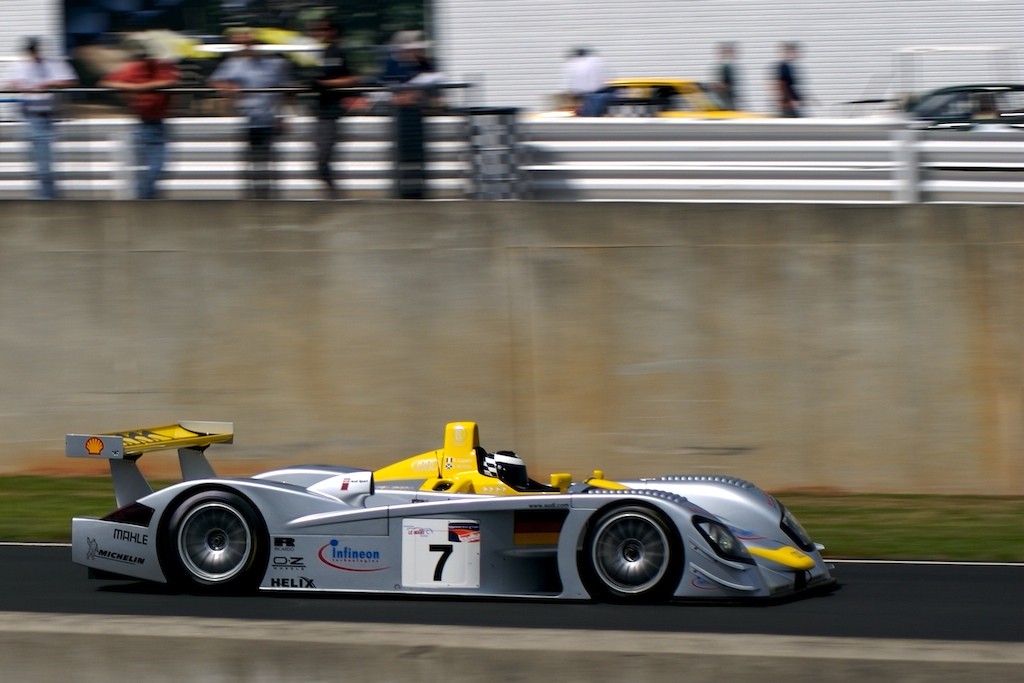
6.2. Investigation and Impact on Safety
Initially, Audi did not provide an immediate reason for the crash, stating that the Audi R8 had "already completed thousands of test kilometres on numerous circuits without any problems." However, five days after the accident, an investigation into the cause was reported to have concluded.
The investigation determined that the tire failure was the sole cause of the crash. It was attributed to a gradual loss of air pressure from the left rear tire, caused by a loose screw that had somehow found its way into the tire. The investigation found no indication of a mechanical problem with the car itself or any driver error on Alboreto's part.
Alboreto's death brought significant anguish to his family and friends, many of whom had long urged him to retire from racing due to its inherent dangers. His cousin, Marisa, conveyed the family's distress to the Italian news agency ANSA. The findings of the investigation had a profound impact on motorsport safety. It motivated Audi to immediately expedite the implementation of a new sensor-based TPMS in their race cars, ensuring that such a hidden issue could be detected and prevented in the future, thereby enhancing overall safety in endurance racing.
7. Legacy and Tributes
Michele Alboreto's impact on motorsport endures, reflected in the heartfelt tributes from his peers and significant posthumous honors.
7.1. Tributes from Fellow Racers
Alboreto's passing resonated deeply within the racing community. Italian Formula One driver Giancarlo Fisichella dedicated his podium finish at the 2005 Italian Grand Prix to Alboreto's memory. Fisichella remarked on Alboreto being the last Italian on the podium at Monza before him, describing him as "a great person, really special," and expressing his fortune in having raced alongside him in touring cars. Tributes also poured in from other drivers at the 2001 Spanish Grand Prix, which took place shortly after Alboreto's death. Racers like Mika Häkkinen, Michael Schumacher, and Rubens Barrichello, who had competed with Alboreto during their careers, voiced their sorrow and respect for their former competitor. Alboreto's reputation for sportsmanship and integrity meant he was widely respected and remembered by his fellow racers.
7.2. Monza Circuit Corner Renaming
On August 28, 2021, a significant honor was bestowed upon Michele Alboreto: the renaming of the iconic Curva Parabolica (Parabolic Curve) at the Monza Circuit to Curva Alboreto. This renaming was officially announced during the 2021 Italian Grand Prix weekend, coinciding with the 20th anniversary of Alboreto's death. The ceremony, attended by his wife and family, as well as Formula One Group CEO Stefano Domenicali, served as a profound tribute to his contributions to Italian motorsport and his enduring legacy. This move cemented his place in the history of the legendary Monza circuit, where he had achieved a second-place finish in the 1988 Italian Grand Prix.
8. Racing career results
8.1. Career summary
| Season | Series | Team | Races | Wins | Poles | F/Laps | Podiums | Points | Position |
|---|---|---|---|---|---|---|---|---|---|
| 1979 | European Formula Three | Euroracing | 6 | 0 | 2 | 1 | 2 | 19 | 2nd |
| Italian Formula Three | ? | 3 | ? | ? | ? | 47 | 2nd | ||
| 1980 | European Formula Three | Euroracing | 14 | 4 | 3 | 1 | 8 | 60 | 1st |
| World Sportscar Championship | Lancia Corse | 4 | 1 | ? | ? | 3 | N/A | NC | |
| Italian Formula Three | Euroracing | 2 | 0 | 1 | 0 | 2 | 25 | 3rd | |
| German Formula Three | 2 | 1 | 1 | 0 | 2 | 0 | NC | ||
| Vandervell British Formula Three | ? | ? | ? | ? | ? | 4 | 13th | ||
| 1981 | Formula One | Tyrrell Racing Team | 10 | 0 | 0 | 0 | 0 | 0 | NC |
| European Formula Two | Minardi | 10 | 1 | 1 | 1 | 2 | 13 | 8th | |
| World Sportscar Championship | Martini Racing | 4 | 1 | 0 | 1 | 1 | 37 | 52nd | |
| 1982 | Formula One | Team Tyrrell | 16 | 1 | 0 | 1 | 2 | 25 | 8th |
| World Sportscar Championship | Martini Racing | 8 | 3 | 1 | 1 | 3 | 63 | 5th | |
| 1983 | Formula One | Benetton Tyrrell Team | 15 | 1 | 0 | 0 | 1 | 10 | 12th |
| World Sportscar Championship | Martini Racing | 5 | 0 | 0 | 0 | 0 | 2 | 85th | |
| European Endurance Championship | 1 | 0 | 0 | 0 | 0 | 12 | 28th | ||
| 1984 | Formula One | Scuderia Ferrari SpA SEFAC | 16 | 1 | 1 | 1 | 4 | 30.5 | 4th |
| 1985 | Formula One | Scuderia Ferrari SpA SEFAC | 16 | 2 | 1 | 2 | 8 | 53 | 2nd |
| 1986 | Formula One | Scuderia Ferrari SpA SEFAC | 16 | 0 | 0 | 0 | 1 | 14 | 9th |
| 1987 | Formula One | Scuderia Ferrari SpA SEFAC | 16 | 0 | 0 | 0 | 3 | 17 | 7th |
| 1988 | Formula One | Scuderia Ferrari SpA SEFAC | 16 | 0 | 0 | 1 | 3 | 24 | 5th |
| 1989 | Formula One | Tyrrell Racing Organisation | 5 | 0 | 0 | 0 | 1 | 6 | 13th |
| Equipe Larrousse | 5 | 0 | 0 | 0 | 0 | ||||
| 1990 | Formula One | Footwork Arrows Racing | 13 | 0 | 0 | 0 | 0 | 0 | NC |
| 1991 | Formula One | Footwork Grand Prix International | 9 | 0 | 0 | 0 | 0 | 0 | NC |
| 1992 | Formula One | Footwork Mugen Honda | 16 | 0 | 0 | 0 | 0 | 6 | 10th |
| 1993 | Formula One | Lola BMS Scuderia Italia | 9 | 0 | 0 | 0 | 0 | 0 | NC |
| 1994 | Formula One | Minardi BMS Scuderia Italia | 16 | 0 | 0 | 0 | 0 | 1 | 25th |
| 1995 | Deutsche Tourenwagen Meisterschaft | Schübel Engineering | 13 | 0 | 0 | 0 | 0 | 4 | 22nd |
| International Touring Car Championship | 7 | 0 | 0 | 0 | 0 | 0 | 28th | ||
| IMSA GT Championship | Euromotorsport Racing | 3 | 0 | 2 | 0 | 1 | 49 | 27th | |
| 1996 | Indy Racing League | Scandia Racing | 3 | 0 | 0 | 0 | 0 | 189 | 11th |
| IMSA GT Championship | 2 | 0 | 0 | 1 | 1 | 0 | NC | ||
| 24 Hours of Le Mans | Joest Racing | 1 | 0 | 0 | 0 | 0 | N/A | DNF | |
| 1996-97 | Indy Racing League | Scandia Racing | 2 | 0 | 0 | 0 | 1 | 62 | 32nd |
| 1997 | 24 Hours of Le Mans | Joest Racing | 1 | 1 | 1 | 0 | 1 | N/A | 1st |
| 1998 | 24 Hours of Le Mans | Porsche AG / Joest Racing | 1 | 0 | 0 | 0 | 0 | N/A | DNF |
| 1999 | American Le Mans Series | Audi Sport Team Joest | 1 | 0 | 0 | 0 | 1 | 24 | 43rd |
| 24 Hours of Le Mans | 1 | 0 | 0 | 0 | 1 | N/A | 4th | ||
| 2000 | American Le Mans Series | Audi Sport North America | 3 | 1 | 0 | 0 | 2 | 44 | 27th |
| 24 Hours of Le Mans | Audi Sport Team Joest | 1 | 0 | 0 | 0 | 1 | N/A | 3rd | |
| 2001 | American Le Mans Series | Audi Sport North America | 1 | 1 | 0 | 0 | 1 | 31 | 22nd |
| European Le Mans Series | 1 | 1 | 0 | 0 | 1 | N/A | NC |
8.2. Complete World Sportscar Championship results
| Year | Entrant | Class | Chassis | Engine | 1 | 2 | 3 | 4 | 5 | 6 | 7 | 8 | 9 | 10 | 11 | 12 | 13 | 14 | 15 | Pos. | Pts |
|---|---|---|---|---|---|---|---|---|---|---|---|---|---|---|---|---|---|---|---|---|---|
| 1980 | Lancia Corse | Gr.5 | Lancia Beta Monte Carlo | Lancia 1.4 L I4t | DAY | BRH | MUG | MNZ | SIL | NÜR | LMS | GLN | MOS | VAL | DIJ | ||||||
| 1981 | Martini Racing | Gr.5 | Lancia Beta Monte Carlo | Lancia 1.4 L I4t | DAY | SEB | MUG | MNZ | RSD | SIL | NÜR | LMS | PER | DAY | GLN | SPA | MOS | ROA | BRH | 52nd | 37 |
| 1982 | Martini Racing | Gr.6 | Lancia LC1 | Lancia 1.4 L I4t | MNZ | SIL | NÜR | LMS | SPA | MUG | FUJ | BRH | 5th | 63 | |||||||
| 1983 | Martini Racing | C | Lancia LC2 | Ferrari 268C 2.6 L V8t | MNZ | SIL | NÜR | LMS | SPA | FUJ | KYA | 86th | 2 | ||||||||
8.3. Complete 24 Hours of Le Mans results
| Year | Team | Co-Drivers | Car | Class | Laps | Overall Position | Class Position |
|---|---|---|---|---|---|---|---|
| 1981 | Martini Racing | Eddie Cheever | Lancia Beta Monte Carlo | Gr. 5 | 322 | 8th | 2nd |
| 1982 | Martini Racing | Teo Fabi | Lancia LC1 | Gr. 6 | 92 | DNF | DNF |
| 1983 | Martini Lancia | Piercarlo Ghinzani | Lancia LC2 | C | 121 | DNF | DNF |
| 1996 | Joest Racing | Pierluigi Martini | TWR Porsche WSC-95 | LMP1 | 300 | DNF | DNF |
| 1997 | Joest Racing | Stefan Johansson | TWR Porsche WSC-95 | LMP | 361 | 1st | 1st |
| 1998 | Porsche AG | Stefan Johansson | Porsche LMP1-98 | LMP1 | 107 | DNF | DNF |
| 1999 | Audi Sport Team Joest | Rinaldo Capello | Audi R8R | LMP | 346 | 4th | 3rd |
| 2000 | Audi Sport Team Joest | Christian Abt | Audi R8 | LMP900 | 365 | 3rd | 3rd |
8.4. Complete European Formula Two Championship results
| Year | Entrant | Chassis | Engine | 1 | 2 | 3 | 4 | 5 | 6 | 7 | 8 | 9 | 10 | 11 | 12 | Pos. | Pts |
|---|---|---|---|---|---|---|---|---|---|---|---|---|---|---|---|---|---|
| 1981 | Minardi Team | Minardi Fly 281 | BMW | SIL | HOC | THR | NÜR | VAL | MUG | PAU | PER | SPA | DON | MIS | MAN | 8th | 13 |
8.5. Complete Formula One World Championship results
| Year | Entrant | Chassis | Engine | 1 | 2 | 3 | 4 | 5 | 6 | 7 | 8 | 9 | 10 | 11 | 12 | 13 | 14 | 15 | 16 | WDC | Pts |
|---|---|---|---|---|---|---|---|---|---|---|---|---|---|---|---|---|---|---|---|---|---|
| 1981 | Tyrrell Racing Team | Tyrrell 010 | Ford Cosworth DFV 3 L V8 | USW | BRA | ARG | SMR | BEL | MON | ESP | FRA | GBR | GER | AUT | NC | 0 | |||||
| Tyrrell 011 | NED† | ITA | CAN | CPL† | |||||||||||||||||
| 1982 | Team Tyrrell | Tyrrell 011 | Ford Cosworth DFV 3 L V8 | RSA | BRA | USW | SMR | BEL | MON | DET | CAN | NED | GBR | FRA | GER | AUT | SUI | ITA | CPL | 8th | 25 |
| 1983 | Benetton Tyrrell Team | Tyrrell 011 | Ford Cosworth DFV 3 L V8 | BRA | USW | FRA | SMR | 12th | 10 | ||||||||||||
| Ford Cosworth DFY 3 L V8 | MON | BEL | DET | CAN | GBR | GER | AUT | ||||||||||||||
| Tyrrell 012 | NED | ITA | EUR | RSA | |||||||||||||||||
| 1984 | Scuderia Ferrari SpA SEFAC | Ferrari 126C4 | Ferrari 031 1.5 L V6t | BRA | RSA† | BEL | SMR | FRA | MON‡ | CAN | DET | DAL | GBR | GER | AUT | NED | ITA | EUR | POR | 4th | 30.5 |
| 1985 | Scuderia Ferrari SpA SEFAC | Ferrari 156/85 | Ferrari 031 1.5 L V6t | BRA | POR | SMR | MON | CAN | DET | FRA | GBR | GER | AUT | NED | ITA† | BEL | EUR | RSA | AUS | 2nd | 53 |
| 1986 | Scuderia Ferrari SpA SEFAC | Ferrari F1/86 | Ferrari 032 1.5 L V6t | BRA | ESP | SMR† | MON | BEL | CAN | DET | FRA | GBR | GER | HUN | AUT | ITA | POR | MEX | AUS | 9th | 14 |
| 1987 | Scuderia Ferrari SpA SEFAC | Ferrari F1/87 | Ferrari 033D 1.5 L V6t | BRA† | SMR | BEL | MON | DET | FRA | GBR | GER | HUN | AUT | ITA | POR | ESP† | MEX | JPN | AUS | 7th | 17 |
| 1988 | Scuderia Ferrari SpA SEFAC | Ferrari F1/87/88C | Ferrari 033E 1.5 L V6t | BRA | SMR† | MON | MEX | CAN | DET | FRA | GBR† | GER | HUN | BEL | ITA | POR | ESP | JPN | AUS | 5th | 24 |
| 1989 | Tyrrell Racing Organisation | Tyrrell 017B | Ford Cosworth DFR 3.5 L V8 | BRA | 13th | 6 | |||||||||||||||
| Tyrrell 018 | SMR | MON | MEX | USA | CAN | FRA | GBR | ||||||||||||||
| Equipe Larrousse | Lola LC89 | Lamborghini 3512 3.5 L V12 | GER | HUN | BEL | ITA | POR | ESP | JPN | AUS | |||||||||||
| 1990 | Footwork Arrows Racing | Arrows A11B | Ford Cosworth DFR 3.5 L V8 | USA | BRA | SMR | MON | CAN | MEX | FRA | GBR | GER | HUN | BEL | ITA† | POR | ESP | JPN | AUS | NC | 0 |
| 1991 | Footwork Grand Prix International | Footwork A11C | Porsche 3512 3.5 L V12 | USA | BRA | SMR | NC | 0 | |||||||||||||
| Footwork FA12 | MON | CAN | MEX | ||||||||||||||||||
| Footwork FA12C | Ford Cosworth DFR 3.5 L V8 | FRA | GBR | GER | HUN | BEL | ITA | POR | ESP | JPN | AUS | ||||||||||
| 1992 | Footwork Grand Prix International | Footwork FA13 | Mugen-Honda MF-351H 3.5 L V10 | RSA | MEX | BRA | ESP | SMR | MON | CAN | FRA | GBR | GER | HUN | BEL | ITA | POR | JPN | AUS | 10th | 6 |
| 1993 | Lola BMS Scuderia Italia | Lola T93/30 | Ferrari 040 3.5 L V12 | RSA | BRA | EUR | SMR | ESP | MON | CAN | FRA | GBR | GER | HUN | BEL | ITA | POR | JPN | AUS | NC | 0 |
| 1994 | Minardi Scuderia Italia | Minardi M193B | Ford HBC7/8 3.5 L V8 | BRA | PAC | SMR | MON | ESP | 25th | 1 | |||||||||||
| Minardi M194 | CAN | FRA | GBR | GER | HUN | BEL | ITA | POR | EUR | JPN | AUS | ||||||||||
† Did not finish, but was classified as he had completed more than 90% of the race distance.
‡ Race was stopped with less than 75% of laps completed, half points awarded.
8.6. Complete Deutsche Tourenwagen Meisterschaft results
| Year | Team | Car | 1 | 2 | 3 | 4 | 5 | 6 | 7 | 8 | 9 | 10 | 11 | 12 | 13 | 14 | Pos. | Pts |
|---|---|---|---|---|---|---|---|---|---|---|---|---|---|---|---|---|---|---|
| 1995 | Schübel Engineering | Alfa Romeo 155 V6 Ti | HOC 1 | HOC 2 | AVU 1 | AVU 2 | NOR 1 | NOR 2 | DIE 1 | DIE 2 | NÜR 1 | NÜR 2 | ALE 1 | ALE 2 | HOC 1 | HOC 2 | 22nd | 4 |
8.7. Complete International Touring Car Championship results
| Year | Team | Car | 1 | 2 | 3 | 4 | 5 | 6 | 7 | 8 | 9 | 10 | Pos. | Pts |
|---|---|---|---|---|---|---|---|---|---|---|---|---|---|---|
| 1995 | Schübel Engineering | Alfa Romeo 155 V6 Ti | MUG 1 | MUG 2 | HEL 1 | HEL 2 | DON 1 | DON 2 | EST 1 | EST 2 | MAG 1 | MAG 2 | 28th | 0 |
8.8. American open-wheel racing results
8.8.1. Indy Racing League
| Year | Team | Chassis | No. | Engine | 1 | 2 | 3 | 4 | 5 | 6 | 7 | 8 | 9 | 10 | Pos. | Pts |
|---|---|---|---|---|---|---|---|---|---|---|---|---|---|---|---|---|
| 1996 | Team Scandia | Lola T95/00 | 33 | Ford Cosworth XB V8t | WDW | PHX | 11th | 189 | ||||||||
| Reynard 95i | INDY | |||||||||||||||
| 1996-97 | NHA | LVS | WDW | PHX | INDY | TXS | PPR | CLT | NHA | LVS | 32nd | 62 | ||||
| Years | Teams | Races | Poles | Wins | Podiums | Top 10s | Indianapolis 500 | Championships |
|---|---|---|---|---|---|---|---|---|
| 2 | 1 | 5 | 0 | 0 | 1 | 3 | 0 | 0 |
8.8.2. Indianapolis 500
| Year | Chassis | Engine | Start | Finish | Team |
|---|---|---|---|---|---|
| 1996 | Reynard | Ford-Cosworth | 12 | 30 | Scandia |
8.9. Complete American Le Mans Series results
| Year | Entrant | Class | Chassis | Engine | 1 | 2 | 3 | 4 | 5 | 6 | 7 | 8 | 9 | 10 | 11 | 12 | Rank | Points |
|---|---|---|---|---|---|---|---|---|---|---|---|---|---|---|---|---|---|---|
| 1999 | Audi Sport Team Joest | LMP | Audi R8R | Audi 3.6 L V8t | SEB | ATL | MOS | SON | POR | PET | LAG | LVS | 43rd | 24 | ||||
| 2000 | Audi Sport North America | LMP | Audi R8 | Audi 3.6 L V8t | SEB | PET | LAG | LVS | ADE | 27th | 44 | |||||||
| Audi R8R | CLT | SIL | NÜR | SON | MOS | TEX | POR | |||||||||||
| 2001 | Audi Sport North America | LMP900 | Audi R8 | Audi 3.6 L V8t | TEX | SEB | DON | JAR | SON | POR | MOS | MOH | LAG | PET | 22nd | 31 | ||